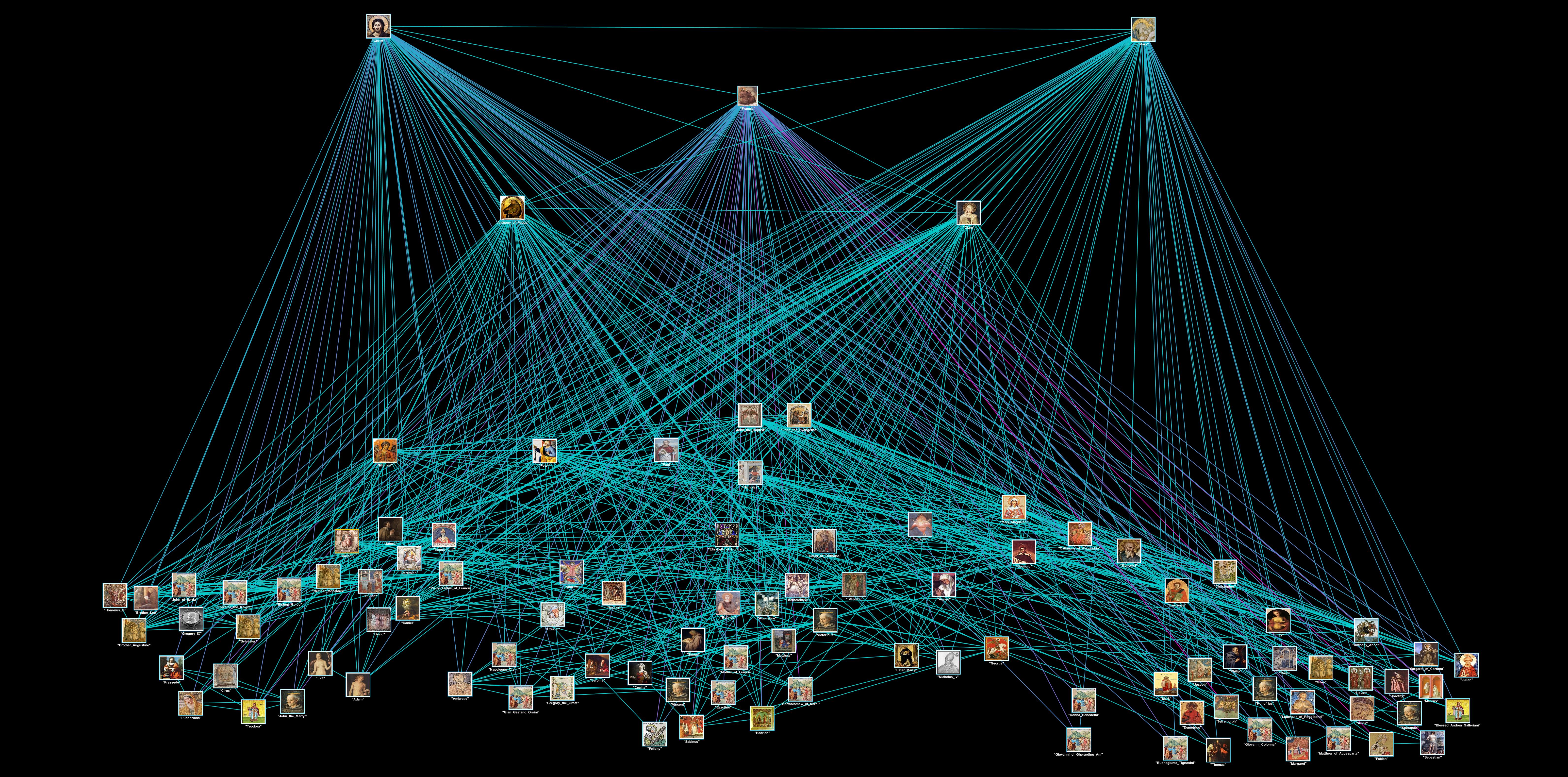
Co-occurrence Network of Saints in Early Images of Saint Francis
The Communion of Saints presents a view of the Christian community that spans space, time, life, and death. Medieval iconography captures the evolution of the Communion by integrating new Saints into established iconographic imagery. The co-occurrences of Saints in medieval paintings provide a basis for modeling the development of iconography as a network. This study adapts techniques for analyzing groups of people in digital images to the images of saints in medieval paintings. In the development of the iconography of St. Francis in the thirteenth and fourteenth centuries artists and their patrons exerted great effort to connect St. Francis to the rich iconographic tradition of the Middle Ages. The network of early images of St. Francis exhibits characteristics consistent with networks that develop by preferential attachment whereby the network evolves by attaching new nodes (recently canonized Saints) to those nodes with high degree. Accordingly, Christ, Mary, and Francis are hubs with high degree, and the degree distribution of the nodes fits that of a power-law distribution. The evolution of this structure, driven by the imagery of intercession, creates a dense network of closed triads arranged hierarchically from Christ to Mary to Francis to the broader community of saints. By examining the evolution of the network, researchers can analyze and visualize the changing structure of the Communion of Saints and its associated iconographic traditions.